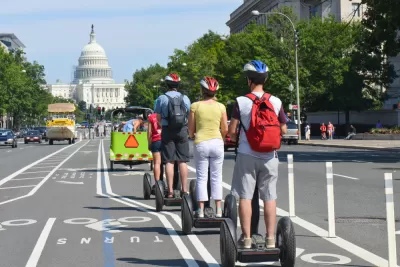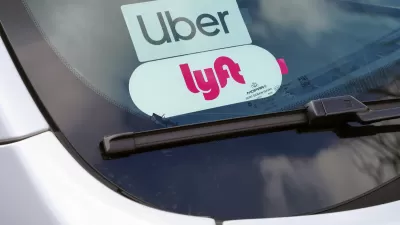Segways were invented 17 years ago, but the technology feels as if it's been dead for a while. So why are scooters continuing to attract cities and investors?

Brad Stone estimates the electric scooter share business with 10,000 scooters on the roads is making about $100,0000 in revenue every day, with plenty of room to keep growing. While much has been written about dockless scooters clogging up sidewalks, investors seem to think this transit mode has legs. "Meanwhile, both Uber Technologies Inc. and Lyft Inc. have applied to introduce e-scooters in San Francisco, where the local government is set to authorize a pilot program after temporarily clearing the city of scooters last month," Stone reports.
Stone sees the price point and on-demand model as the key reason this transit mode survives while vehicles like Segways failed in the past. A ride on a Bird or LIme e-scooter costs around $2 for a 6-minute trip, so there's not much to keep curious consumers from trying them out.
FULL STORY: Here’s How Scooter Startups Solved the Segway Problem

Planetizen Federal Action Tracker
A weekly monitor of how Trump’s orders and actions are impacting planners and planning in America.

Congressman Proposes Bill to Rename DC Metro “Trump Train”
The Make Autorail Great Again Act would withhold federal funding to the system until the Washington Metropolitan Area Transit Authority (WMATA), rebrands as the Washington Metropolitan Authority for Greater Access (WMAGA).

DARTSpace Platform Streamlines Dallas TOD Application Process
The Dallas transit agency hopes a shorter permitting timeline will boost transit-oriented development around rail stations.

Maryland Plans Quick-Build Complete Streets Projects
The state will use low-cost interventions to improve road safety in five Maryland counties.

Downtown Los Angeles Gears Up for Growth
A new report highlights Downtown L.A.’s ongoing revival through major housing projects, adaptive reuse, hospitality growth, and preparations for global events in the years ahead.

Supreme Court Landlord Appeal Case Could Overturn Tenant Protections
A legal case claiming that COVID-era eviction moratoriums were unconstitutional could spell trouble for tenant protections.
Urban Design for Planners 1: Software Tools
This six-course series explores essential urban design concepts using open source software and equips planners with the tools they need to participate fully in the urban design process.
Planning for Universal Design
Learn the tools for implementing Universal Design in planning regulations.
Municipality of Princeton
Roanoke Valley-Alleghany Regional Commission
City of Mt Shasta
City of Camden Redevelopment Agency
City of Astoria
Transportation Research & Education Center (TREC) at Portland State University
US High Speed Rail Association
City of Camden Redevelopment Agency
Municipality of Princeton (NJ)





























